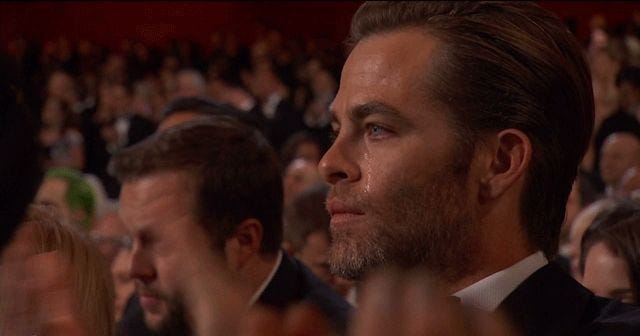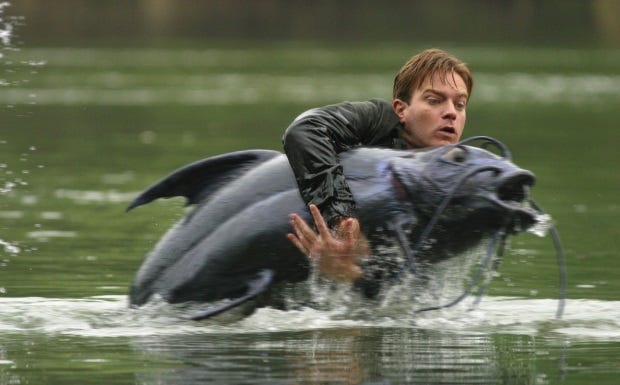This week’s rebroadcast gives some short answers on transmitting emotion from the screen to the audience.
I am writing an extended essay in order to get my IB Diploma for school about film, especially about emotions in film. I was wondering if you could help me out by answering a few questions.
What causes emotional catharsis in a movie?
What sort of components (lighting, sound, dialogue,…) have the most emotional effect on the viewers, and do you have any examples?
What techniques are used to produce emotions within the viewer of a movie?
What are some things that you have specifically done (relating to the screenplays that you have written) in order to produce emotions in a movie?
— Danielle
Danielle is attending my former high school, so I feel some duty to steer her in the right direction, if not exactly answer her questions.
I never wrote an extended essay about emotion in film. But if I did, I’d probably reach the following conclusions.
Emotional catharsis is a direct function of how much the audience identifies with the character(s). Catharsis is a journey through dark territory, and you don’t go on that trek unless you can put yourself in a given character’s place, and feel like you’re living that experience.
The triumvirate responsible for creating emotion are The Writer, who creates the character and lays out the obstacles; The Actor, who gives the character weight and breath; and The Director, who coordinates the technical elements (such as lighting, editing, and music) to achieve the emotional reaction desired.
An example from my own work: Will telling Edward the final story in Big Fish.
GIANT SPOILER WARNING if you haven’t seen the movie.
On a writing level, the moment wouldn’t work if we hadn’t invested time in seeing their dilemma from both sides: the frustrated son, the slippery father. The script sets up a lot of elements and characters for recalls: Karl the Giant, the shoes, the Girl in the River.
The performances are strong, with actors continuing threads established earlier. In particular, Billy Crudup tends to get overlooked here: because he’s so prickly earlier on, it’s particularly affecting to see him struggle to hold on.
Finally, Tim Burton directs the elements calmly. From visuals to music, he’s careful not to push too hard or too fast, letting the emotion kindle.
Good luck with the essay.
Are you enjoying this newsletter?
📧 Forward it to a friend and suggest they check it out.
🔗 Share a link to this post on social media.
🗣 Have ideas for future topics (or just want to say hello)? Reach out to Chris via email at inneresting@johnaugust.com, Mastodon @ccsont@mastodon.art, or Threads @ccsont@threads.net



